Results
-
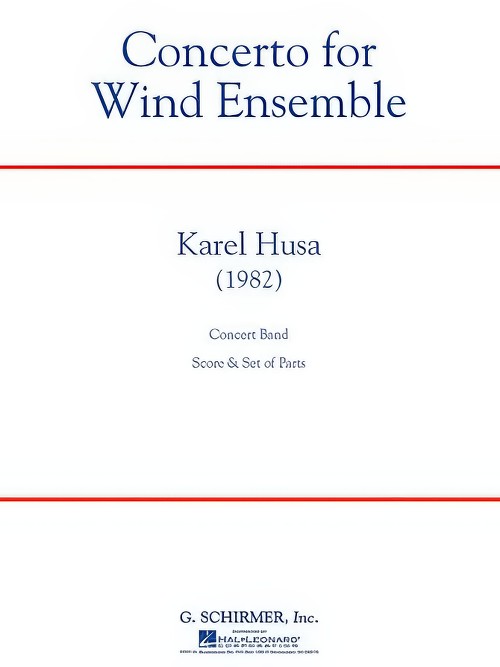 £141.99
£141.99Concerto for Wind Ensemble (Concert Band - Score and Parts) - Husa, Karel
Commissioned by the Michigan State University Alumni Band, this three movement work by Pulitzer Prize-winning composer Karel Husa was the winner of the first Louis Sudler International Wind Band Composition Competition in 1983. Previously available only in rental, this important work is now available for sale.A note from the composer: Divided into three movements, this work is a display of virtuoso passages given to solo instruments as well as to the groups of the ensemble. In the Fanfare of the first movement, the brass section "concertizes" in groups of four brass quintets (2 trumpets, horn, trombone and tuba or baritone), spread from left to right in back. The saxophones (S, A, T, B) are placed in front of the brass quintets, and the woodwinds occupy the front of the stage, with percussion on the left and right side. These groups, like the brass quintets, play in the concertante style, particularly in the first and last movements. At the same time, each movement contains individual solo passages (for example, timpani and flute in Movement I - "Drum Ceremony" and English horn and other low woodwinds in Movement II - "Elegy"). The composition of this piece was prompted by the excellence of wind and percussion players today, and by the incredible growth of wind ensembles, orchestras, and bands in the last 25 years. It is intended for their enjoyment.Duration: 23:00
Estimated dispatch 7-14 working days
-
 £89.99
£89.99Ave Maria (Concert Band - Score and Parts) - Schubert, Franz - Doss, Thomas
The Ave Maria by Franz Schubert is known and loved worldwide and was originally written as part of the song cycle The Lady of the Lake. In the course of time, the German text has been replaced by the traditional Latin prayer so often that the song has become known as the Ave Maria by Schubert. This lyrical melody, stirring in its simplicity, is complemented by a murmuring accompaniment that imitates a harp, a feature that Thomas Doss fully does justice to in this arrangement.Duration: 6:30
Estimated dispatch 7-14 working days
-
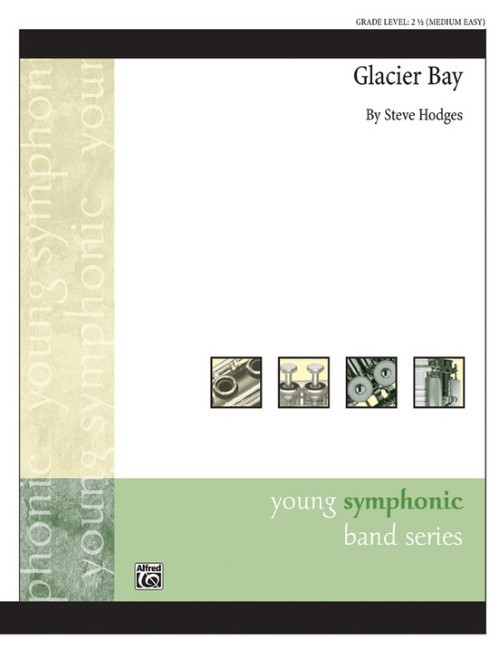 £50.50
£50.50Glacier Bay (Concert Band - Score and Parts) - Hodges, Steve
Inspired by the majestic Alaskan landscape, Glacier Bay provides plenty of opportunities for dynamic and expressive playing by the young musicians. Following a brief introduction, the main theme is presented first by the trumpets and then by the low brass and trumpets in a lively and flowing manner. The active syncopated accompaniment patterns in the low brass and woodwinds provide an effective contrast to the melody. The B section of the piece moves smoothly into a stately, alla breve tempo with a clarinet choir making the first presentation of the melody. Following a very peaceful conclusion to the B section, an abbreviated restatement of the A section melody leads to the dynamic ending. Duration: 3.30
Estimated dispatch 7-14 working days
-
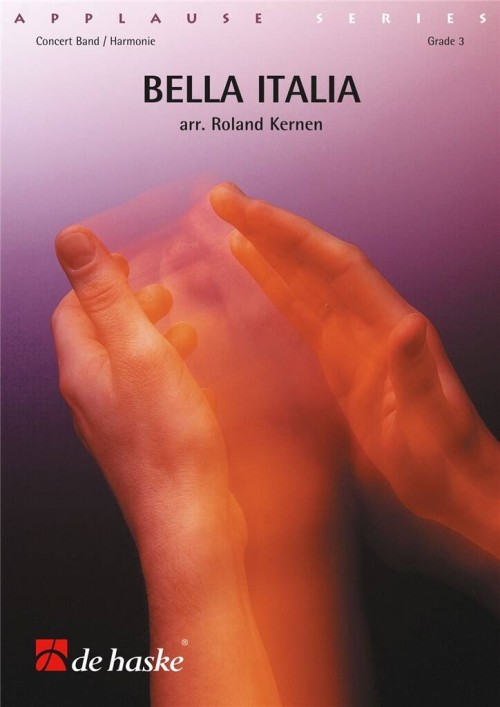 £109.99
£109.99Bella Italia (Concert Band - Score and Parts) - Kernen, Roland
Bella Italia is a medley of three Neapolitan songs that were made famous and popular by the tenor Mario Lanza. The work opens with the graceful waltz Santa Lucia, which is followed by a Latin-style version of O Sole Mio, a melody that became even more well known when used by Elvis Presley as the basis of the song It's Now or Never. The cheerful Funicul?, Funicul? ends the medley in 6/8 time. This arrangement for concert band by Roland Kernen will appeal to a broad audience and will leave both the band and the audience in a high-spirited mood. 0:07:15
Estimated dispatch 7-14 working days
-
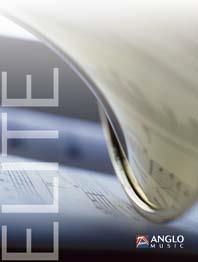 £317.99
£317.99Music of the Spheres (Concert Band - Score and Parts) - Sparke, Philip
The piece reflects the composer's fascination with the origins of the universe and deep space in general. The title comes from a theory, formulated by Pythagoras, that the cosmos was ruled by the same laws he had discovered that govern the ratios of note frequencies of the musical scale. ('Harmonia' in Ancient Greek, which means scale or tuning rather than harmony - Greek music was monophonic). He also believed that these ratios corresponded to the distances of the six known planets from the sun and that the planets each produced a musical note which combined to weave a continuous heavenly melody (which, unfortunately, we humans cannot hear). In this work, these six notes form the basis of the sections MUSIC OF THE SPHERES and HARMONIA. The pieces opens with a horn solo called t = 0, a name given by some scientists to the moment of the Big Bang when time and space were created, and this is followed by a depiction of the BIG BANG itself, as the entire universe bursts out from a single point. A slower section follows called THE LONELY PLANET which is a meditation on the incredible and unlikely set of circumstances which led to the creation of the Earth as a planet that can support life, and the constant search for other civilisations elsewhere in the universe. ASTEROIDS AND SHOOTING STARS depicts both the benign and dangerous objects that are flying through space and which constantly threaten our planet, and the piece ends with THE UNKNOWN, leaving in question whether our continually expanding exploration of the universe will eventually lead to enlightenment or destruction.Duration: 15:30
Estimated dispatch 7-14 working days
-
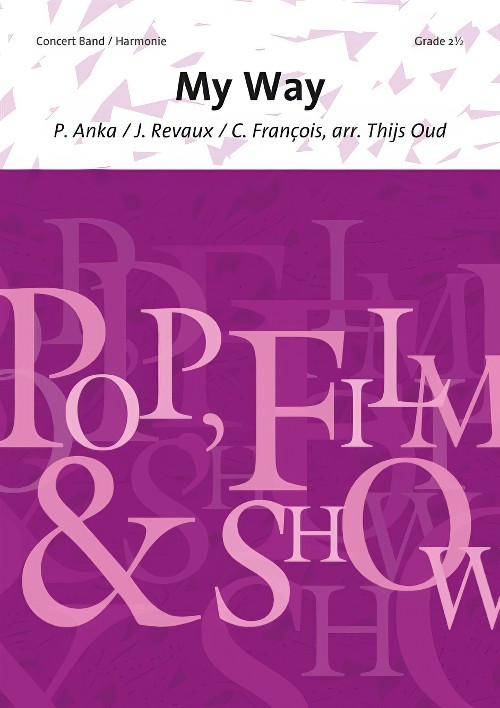 £76.99
£76.99My Way (Concert Band - Score and Parts) - Oud, Thijs
The evergreen My Way, originally a French chanson (Comme d'Habitude), was written by Jacques Revaux and Gillies Thibault and first released by Claude Francois in 1967. Paul Anka wrote the English lyrics which were used by Frank Sinatra who made it in to the American charts with his world famous interpretation in 1969. Since then the song has been covered by a variety of pop stars, including Elvis Presley. This arrangement is based on the Elvis version and within it the chorus appears in a swinging blues style. This popular song will be ideal for that spectacular ending to your concert.Duration: 3:45
Estimated dispatch 7-14 working days
-
 £26.99
£26.99Sound the Bells! (Concert Band - Score only) - Williams, John - Lavender, Paul
Inspired by the huge Japanese temple bells and written to celebrate a royal wedding, this two-minute fanfare by John Williams may be the ultimate concert opener! Originally conceived for brass and percussion, it was later scored for orchestra by Williams and used by the Boston Pops. This edition for band features a festive aura and the splendidly powerful writing that we have come to expect from Mr. Williams.
Estimated dispatch 7-14 working days
-
 £134.99
£134.99Sound the Bells! (Concert Band - Score and Parts) - Williams, John - Lavender, Paul
Inspired by the huge Japanese temple bells and written to celebrate a royal wedding, this two-minute fanfare by John Williams may be the ultimate concert opener! Originally conceived for brass and percussion, it was later scored for orchestra by Williams and used by the Boston Pops. This edition for band features a festive aura and the splendidly powerful writing that we have come to expect from Mr. Williams.
Estimated dispatch 7-14 working days
-
 £176.50
£176.50Masquerade (Concert Band - Score and Parts) - Sparke, Philip
Masquerade was commissioned by Stadtmusik Willisau from Switzerland (Reto Gdel, conductor) to celebrate their 175th anniversary in 2003 and first performed by them in November that year.1. Overture: The first movement opens with a fanfare-like figure, featuring the brass, before the main them is introduced over staccato chords. After a short, syncopated interlude a legato theme is introduced in the tenor register and material is developed until the music slows temporarily. The opening theme returns and the 'tenor' tune is taken up by the whole band until the opening fanfare returns to close the movement.2. Elegy: The slow movement opens intensely with a bare two-part theme, which leads to a passionate chorale-style melody. A second theme is introduced and leads to a climax, a return of the chorale theme and a pianissimo repeat which again leads to a full-band climax. The two-part theme returns quietly to create a peaceful close.3 Interlude: A short movement which changes the mood to introduce...4 Finale: Three violent chords preface a lively syncopated opening theme. The trumpets introduce a second idea, which is treated fugally, and this in turn leads to the main melodic idea of the movement, over staccato chords. A contrasting subject is then introduced in the middle of the band, followed by echoes of the first movement fanfare. The opening theme returns and material is revisited until the opening fanfare returns in full to end the work triumphantly.Duration: 15:30
Estimated dispatch 7-14 working days
-
 £48.95
£48.95Quintero (Concert Band - Score and Parts) - Hodges, Steve
This exciting new piece from Steve Hodges begins with a chorale-type introduction that leads to a dynamic opening statement by the low brass. The main theme is legato to contrast with the busy percussion section. A secondary theme, introduced by the woodwinds, is followed by the return of the introduction with development. The second theme is then repeated by the woodwinds in a light, jazzy style. This leads to a powerful conclusion where the percussion section drives the full ensemble to a rousing finish. Duration: 3.00
Estimated dispatch 7-14 working days
